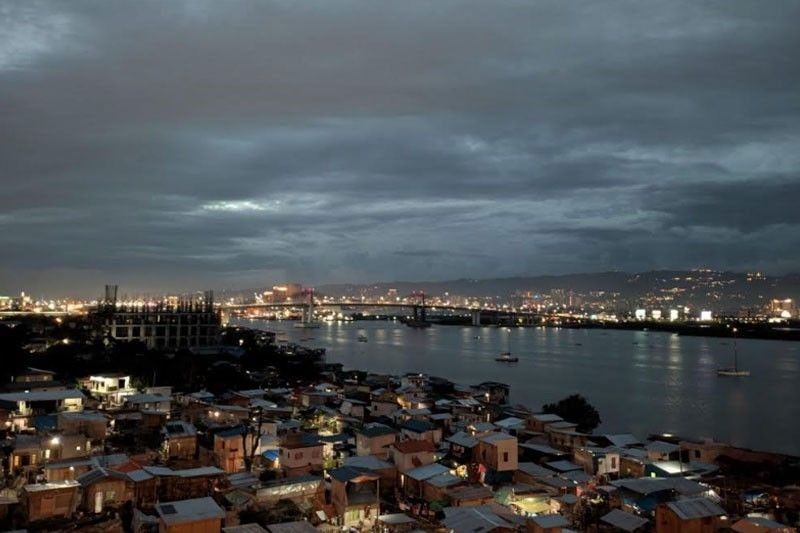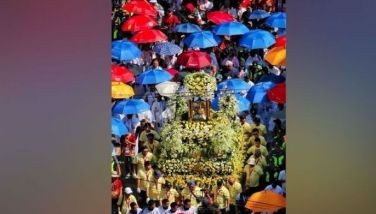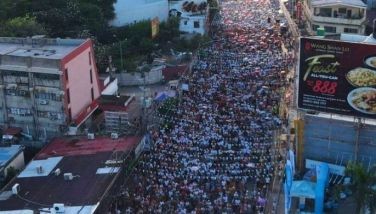The promise and challenges of the 4th Cebu-Mactan Bridge

(Last Part)
CEBU, Philippines — As the fourth Cebu-Mactan bridge project is set to move forward, concerns about its environmental impact is also emerging alongside the issues of livelihood displacement and relocation for those that will be affected by the project.
Based on Japan International Cooperation Agency’s (JICA) Environmental Impact Statement, the project is covered under the Philippine Environmental Impact Statement System (PEISS). As part of the process, the project was required to secure an Environmental Compliance Certificate (ECC) from Department of Environment and Natural Resources’ (DENR)-Environmental Management Bureau (EMB)-7.
The Department of Public Works and Highways (DPWH) already secured the ECC in 2019 while also carrying out other activities, including Information, Education, and Communication (IEC) campaigns; public and technical scoping; public hearings; and the preparation of resettlement action plans, among others. This was deemed necessary as the coastal road on the Mandaue side of the project will cut through a mix of residential, commercial, and industrial areas, as well as numerous informal settlements along the coastline.
While the area is not classified as a protected site, a nearby tidal flat has been identified, which serves as a habitat for some bird species. To assess the environmental impact, a terrestrial flora and fauna/mangrove study was conducted in the affected areas. The study identified several species of birds, although none were found to be threatened. Four mangrove species from three different families were also recorded, as well as twenty-six species of terrestrial trees from fourteen different families.
The aquatic flora and fauna assessment also revealed a variety of species, including four types of seagrasses, six species of algae, and three species of macroinvertebrates. However, both ends of the proposed bridge route were classified as having “poor” reef conditions.
More than that, construction activities are expected to have a noticeable impact on air quality and noise levels.
Dr. Kurt Raymond Cabahug, a medical doctor and avid birder, told The Freeman that Cansaga Bay “is home and shelter to various mangrove and wetland birds, both native and migratory: kingfishers, herons, egrets, terns, various waders, etc.”
He added that while similar bird species can traditionally be found on the Lapu-Lapu side, the ongoing coastal conversion there has led to a noticeable decline in bird populations.
Further, Cansaga Bay remains to have one of the largest mangrove ecosystems in Cebu, yet it is increasingly “under threat” due to mangrove cutting and land conversion.
DENR emphasizes that mangroves are vital salt-tolerant ecosystems, crucial for coastal protection, carbon sequestration, biodiversity conservation, poverty alleviation, and food security.
Although Dr. Cabahug only recently took up birdwatching in the Cansaga Bay area, he considers it one of the best sites in Metro Cebu for observing migratory birds. These species travel from as far as Eastern and Northern Asia to spend the autumn, winter, and spring months in the bay.
“It has a great potential for ecotourism and for Filipinos to discover an actual living, breathing ecosystem right in Metro Cebu,” Cabahug added.
With that in mind, he hopes future developments in the area will prioritize the preservation of its rich biodiversity. If other countries can maintain their wetlands while enabling development, “why can’t we?” Dr. Cabahug asked.
He suggested that strict protection zones for the environment be established, while buffer zones be created for the general public to enjoy the surrounding ecosystem.
Cabahug’s fellow birder, Lyndon Grondiano, also expressed hope that Cansaga Bay around Barangays Paknaan and Umapad will be preserved for future generations.
“Ug unta ma preserve ang area sa umaabot nga panahon. Kani nalang baya ang dako-dako nga mudflats nga dool sa ramsar site nato,” Grondiano said. The ramsar site he refers to is the Olango Island Wildlife Sanctuary, one of the 10 identified ramsar sites, or wetlands of international importance, in the Philippines.
Lawyer Kristine Joy Argallon, policy and litigation officer at the Philippine Earth Justice Center, also stressed that the fourth bridge project is located in an area where mangrove and seagrass ecosystems thrive and many local residents depend on fishing and aquaculture for their livelihood.
“The construction of the fourth bridge will threaten these ecosystems, as well as the livelihood of the people in the area, as access to fishing grounds would be limited, which will likely reduce fish catches,” Atty. Argallon said.
To address these concerns, she emphasized the need for proper measures to ensure that mangroves are not cut down, and tidal flats are not filled in to make way for the project, in accordance with the conditions of the permit.
“Important also that even before the construction starts, there has to be an assessment of the existing species of flora and fauna in the area and ensure that these are not harmed, disturbed or impacted during the construction, and involve communities in monitoring as part of public participation in these kinds of projects,” Argallon added.
Award-winning marine biologist Dr. Danilo Largo from the University of San Carlos, who has monitored the Mactan Channel where the first three Cebu-Mactan bridges stand and where the fourth bridge will be constructed, also raised concerns about the local marine ecosystem. Largo noted that there are still live, soft corals along Cansaga Bay, but more than just coral, these ecosystems provide critical habitats.
Describing the Mactan Channel as “Cebu’s lifeblood of Cebu’s economy,” Largo also pointed out that it is “a sinkhole for all kinds of waste.” This is due to the area’s high concentration of industrial activities, as well as its proximity to the international airport and businesses. The channel also suffers from pollution as runoff from the mountains and waste from nearby industries flow into the bay.
Despite its polluted state, Largo emphasized that any infrastructure development, including the new bridge, will have an impact. “Actually, in a marine environment, daghang habitats nga ma-affected on whatever infrastructure development like a bridge construction there is…naa gyuy impact, pero considering the state of the Mactan channel, polluted naman gyud na ever since nya silted,” Largo said.
“The area has long been very polluted and needs a fresh lease of life,” said Largo, while also suggesting rehabilitating the area. “Whatever construction imong e-introduce diha, naa man gyud nay corresponding damage gyud, so you have to compensate with another mitigation,” he added.
Largo proposed the creation of seaweed beds, particularly large Sargassum seaweed, known locally as “samo,” as a potential mitigation strategy. As an expert in seaweed production, he explained that, like terrestrial plants, seaweed creates a habitat and acts as food, protection, and breeding grounds for marine species.
“If you preserve the habitants including the seaweed beds, that will maintain the diversity of the area…Sagbot ra na sa tan-aw sa uban but they have very important role sa pag maintain sa eco-system, as they serve as food to other organisms, many of them are important for us as seafoods,” Largo explained.
Issues acknowledged
The concerns raised—from livelihood and relocation to environmental impact—have already been acknowledged, said Engr. Nonato “Nonie” Paylado, long-time Planning and Design Division Chief at the Department of Public Works and Highways (DPWH)-7.
“There were a series of public consultations where all affected parties were involved. There are measures in place to address the concerns of those who will be affected,” Paylado said. He added that DPWH has already consulted with DENR about the mangrove area in Cansaga Bay and revised the bridge's design accordingly.
“Gi-revise ang design ani para silbi malikayan ang mangroves, if I’m not mistaken, murag mao na siya’y development,” Paylado explained.
While change is inevitable, it is hoped that the project will take a holistic approach, considering its impact on both people and the environment. — (FREEMAN)
NOTE: This story was produced with the support of Internews’ Earth Journalism Network as part of the Media Action on Sustainable Infrastructure in the Philippines.
- Latest
























